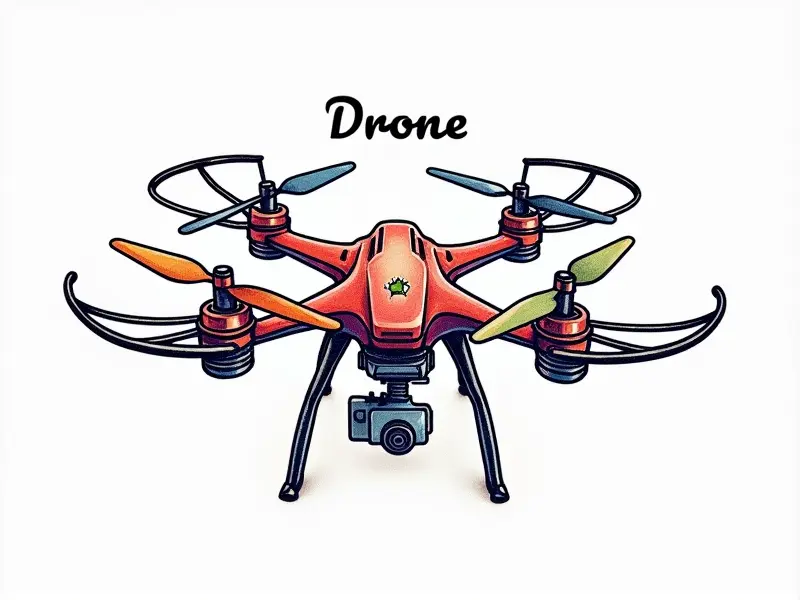Can drone autopilot be hacked?

Is Drone Autopilot Vulnerable to Hackers?
The increasing reliance on autonomous drones for various applications, such as aerial photography, surveillance, and delivery services, has raised concerns about the security of drone autopilot systems. As these technologies become more sophisticated, so do the methods employed by malicious actors seeking to exploit vulnerabilities.
Security Risks in Drone Autopilot Systems
The primary risks associated with drone autopilot systems stem from their connectivity and reliance on software updates. Hackers can target drones through wireless connections like Wi-Fi or cellular networks, potentially gaining control over the aircraft's flight path and operations.
Protecting Your Drone from Autopilot Hacks
- Use Strong Encryption: Implement robust encryption protocols to secure data transmission between your drone and ground station.
- Regular Software Updates: Keep autopilot software up-to-date with the latest security patches.
- Air-Gapped Networks: Operate drones on isolated networks to prevent unauthorized access.
Understanding the Risks of Hacking Drones
Hackers can exploit various vulnerabilities in drone autopilot systems, including outdated firmware, weak passwords, and unsecured communication channels. These risks underscore the importance of proactive security measures for drone operators.
Ensuring Safety in Drone Autopilot Technology
To ensure safety, it is crucial to implement a multi-layered approach that includes both technical safeguards and operational best practices. This involves regular audits of system vulnerabilities and continuous monitoring for suspicious activities.
Potential Threats to Drone Autopilot Tech
Drone autopilot systems face several potential threats, including:
- Data Interception: Hackers can intercept data transmitted between the drone and ground control station.
- Man-in-the-Middle Attacks: Attackers may position themselves between the drone and its controller to manipulate flight commands.
- Malware Infections: Malicious software can be introduced through compromised firmware updates or infected USB drives.
Safeguarding Autonomous Drones from Hackers
To safeguard autonomous drones, it is essential to adopt a proactive security strategy that includes:
- Implementing Two-Factor Authentication (2FA): Enhance login security with an additional layer of verification.
- Conduct Regular Security Audits: Perform routine checks for vulnerabilities and address them promptly.
- Leverage Intrusion Detection Systems (IDS): Monitor network traffic for signs of unauthorized access or malicious activity.
How Safe is Autonomous Drone Flight?
The safety of autonomous drone flight depends on the effectiveness of security measures in place. While drones offer numerous benefits, they also present significant risks if not properly secured against hacking attempts.
Securing Drone Autopilot Against Unauthorized Access
To secure drone autopilot systems from unauthorized access:
- Encrypt Data Transmission: Use strong encryption algorithms to protect data in transit.
- Limit Physical Access: Restrict physical access to drones and their control devices.
- Train Personnel: Educate drone operators on security best practices and the importance of maintaining secure operations.
The Reality of Hacking Drone Autopilot Systems
The reality is that hacking drone autopilot systems is a growing concern. As technology advances, so do the methods employed by hackers to exploit vulnerabilities in these systems.
Preventing Hacking of Drone Autopilot Features
To prevent hacking of drone autopilot features:
- Use Secure Communication Protocols: Ensure that all communication between drones and control stations is encrypted and secure.
- Implement Access Controls: Limit access to critical systems and data to authorized personnel only.
- Maintain a Security Culture: Foster an environment where security is prioritized at all levels of drone operation.
Conclusion
The potential for hacking drone autopilot systems poses significant risks to both personal and commercial users. By understanding these threats and implementing robust security measures, operators can significantly reduce the likelihood of unauthorized access or manipulation of their drones. As technology continues to evolve, staying vigilant and proactive in addressing cybersecurity challenges will be crucial.

